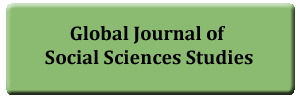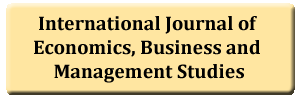An Intratextual Analysis of “Anyone Lived in a Pretty How Town” By E. E. Cummings
DOI:
https://doi.org/10.20448/801.41.1.13Keywords:
Stylistics, Phonological deviations, Graphological deviations, Morphological deviation, Syntactical deviations, Semantic deviations, Foregrounded deviations.Abstract
The style is usually determined by way of language is used in a piece of writing. Language never runs yonder absorption of the supremacy of words. A word, thus, constitutes the basic unit of a language and contributes to the panache of writing in a composition. Words are meaning loaded blocks used to build on a writer's thoughts. A word is governed by a morphological makeup in itself and lies in close proximity and association with the other neighboring units as ‘lexico syntactic'. The style is language manipulated, and thus, literary language differs from ordinary language in various ways. However, literary language deviates from word to sentence level in a piece of literature without negatively affecting the meaning or flow of communication between the literary writer and his readers, which is the main focus of this paper. For this purpose, a poem: "Anyone Lived in A Pretty How Town" by a renowned American poet; E. E. Cummings, is selected and analyzed stylistically from word to text level. Cummings is acclaimed the most unconventional and ground-breaking poet of English literature. He is eminent for his abandoned, constant, and effective deviation from the established norms of syntax, lexis, punctuation, capitalization and graphic presentation. Obviously, very few poets have done such violence to language manipulation with such infallible poetic success. His poems relish different morphological makeups, syntactical combinations semantic organizations, pragmatic derivations and discourse patterns, but still these poems constitute good and effective literary compositions. However, discoursing literary tenets is not the concern of this study, rather it is focused on the linguistic applications of the language patterns being used with the help of textual analysis. This analysis is based on Geoffrey N. Leech's theory of linguistic deviation which follows a three-step model: realization, form and semantics. The first step, realization, covers phonology and graphology; which mean speech sound production and word formation respectively. The second step reckons grammar; a set of rules that govern the structure of a language in totality, and lexicon; the available word choice for any write up. However, the last step, semantics, ends up in denotative and cognitive meanings of a text. Phonological, graphological, morphological and syntactical devices are the main tackles of the study.




